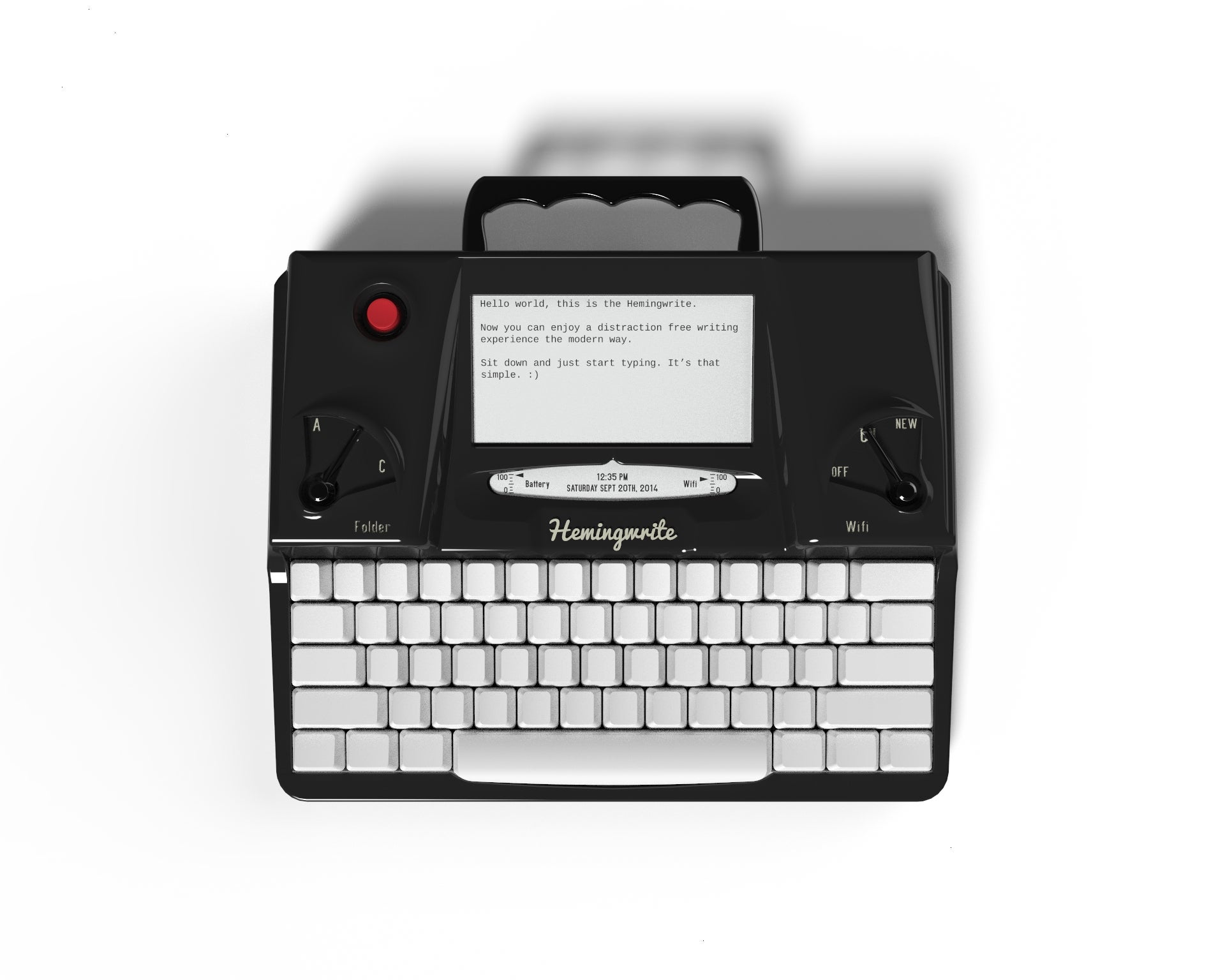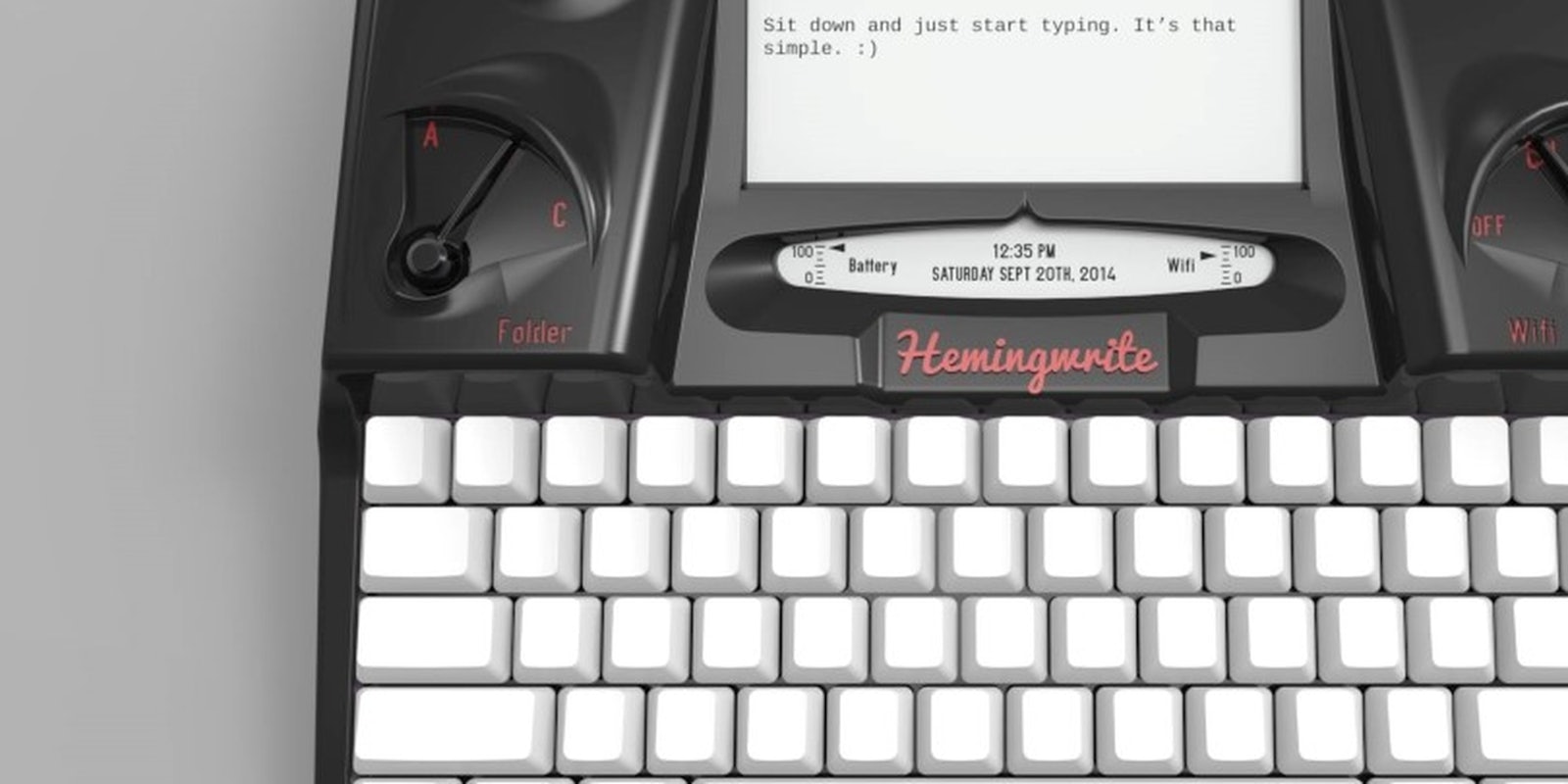There are millions of excuses to not write a novel—most of them quite sound. For hundreds of years, the most effective has also been the simplest: “Just busy with other stuff, I guess.”
But no longer. This is the age of the “Hemingwrite,” an “over-engineered typewriter” billed as a “distraction-free writing device.” Springing from the minds of designer Adam Leeb (an MIT-educated mechanical engineer) and software developer Patrick Paul, it’s also a pretentiously named waste of talent and effort, suitable only for a museum exhibit on the death of innovation. And maybe a few sad posers in search of a conversation piece.

Why would you want a 1990s-era word processor that can sync with Google Drive? Oh, if only there were any semblance of a reasonable answer. I suppose this will have to do:
Writing is hard, really hard! For most of us that haven’t written anything since high school, we don’t have the ability to write elegant prose. We need all the help we can get! The Hemingwrite is designed to aid both the new and established writer by providing a robust writing tool that completely removes all distraction from our daily connected lives. Wifi connectivity has been included to sync to the cloud but without a browser or email client there will be no playing angry birds or checking email. The Hemingwrite is designed for one thing and one thing only: putting words on a page.
Yes, whereas writers of the past had to hone their craft for years before producing something worth reading, you get to skip those agonies thanks to a junky six-inch E Ink screen and a vanishingly small theoretical distance from that demanding mistress we call the Internet.
Check the specs on this bad boy: “6+ week projected battery life,” which means you can “Pull a Thoreau and [write in an] off-the-grid cabin in the woods”! (How did Thoreau pull a Thoreau all the way back in the 19th century, before the Hemingwrite existed? History will never know.) We’re also working with a “1 million+ page memory.” Man, just a million? That’s barely enough to cover the first volume of your outsider-art fantasy memoir—to say nothing of all the elvish translations therein! Maybe, with a little luck, Leeb will invent a Proustian model next.

Let’s not hesitate to say it: the Hemingwrite heralds a revolution in literature. For too long, books have only been written by people who have the self-control to concentrate on stringing words together for entire minutes at a stretch. Why should we let these freaks of nature account for the sum total of printed matter? Throw open the floodgates, we say, and let the unfairly muted voices of our most unfocused, undisciplined creatives ring out.
Even then, distraction will threaten the potential masterworks that ought to grace our libraries and Amazon wishlists. At any given moment, a would-be author might have to use the bathroom. They might find themselves readjusting an uncomfortable pair of underwear. A butterfly might float past the window, obliterating their important thoughts once and for all. Yet we’ll struggle forward, somehow. As Beckett famously wrote, “I can’t go on, I’ll go on—provided there is some quirky retro-futurist equipment that pretends to solve a problem that never existed except in the minds of bored tech bros, of course.” We couldn’t agree more.
Photo via Hemingwrite.com
